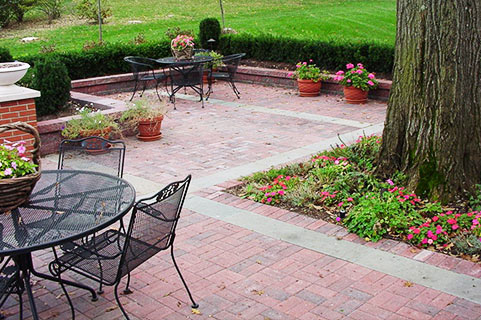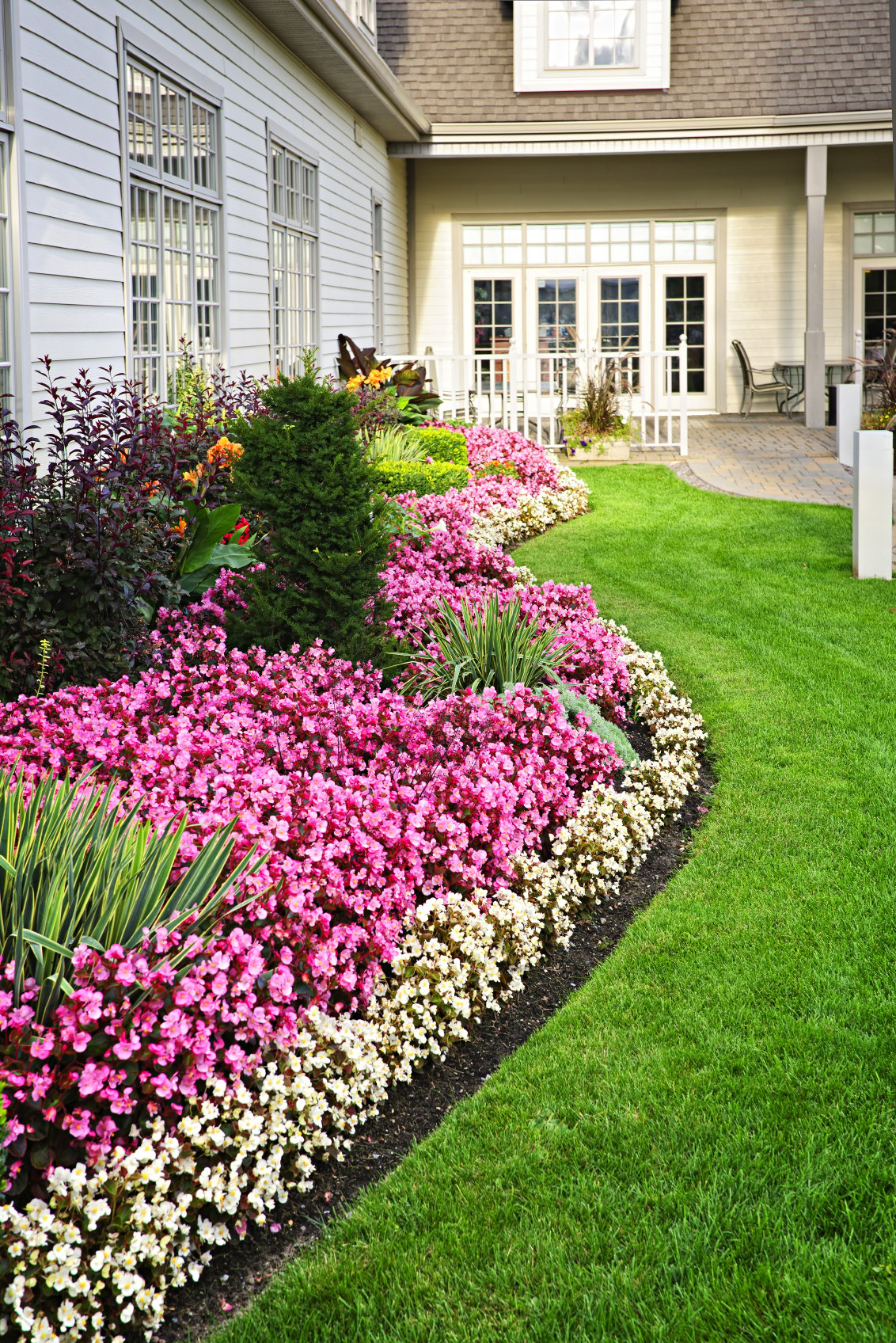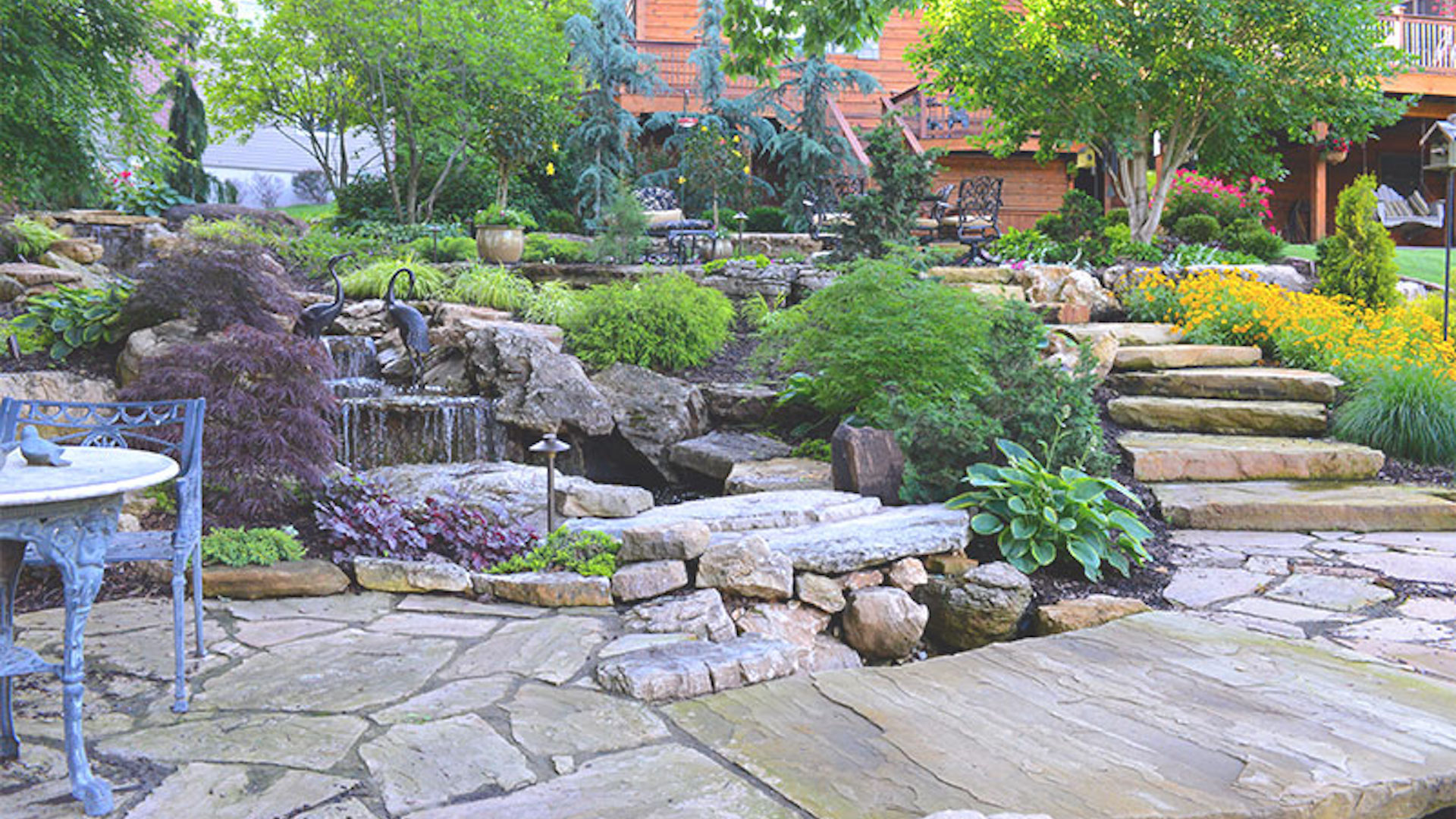The Complete Guide to Retaining Wall Installation for DIYers
Exploring Different Kinds Of Landscape Design to Improve Your Outdoor Environment
Landscaping plays an essential function in defining exterior areas. Different designs, from standard gardens to modern-day minimal styles, use unique benefits for enhancing aesthetic appeals and function. Integrating aspects like xeriscaping and native plants can add to environmental balance. Understanding the interplay of hardscape and softscape is crucial for developing welcoming environments. The selections available can be frustrating, triggering one to assess which style best lines up with their vision for an outdoor refuge.
Typical Garden Landscape Design

While numerous modern-day gardens embrace minimalism and indigenous growings, typical garden landscape design stays a treasured strategy that stresses symmetry, framework, and ornamental features. This design frequently includes formal geometric layouts, where pathways, flowerbeds, and hedges are organized with precision. Central focal points, such as water fountains or sculptures, draw the eye and give a feeling of harmony.Traditional landscape design often includes a range of plant types, showcasing seasonal blossoms and evergreen components. Timeless hedges, perennials, and annuals produce lively colors and appearances throughout the year. Additionally, pergolas, trellises, and arches include vertical passion and work as assistance for climbing plants, boosting the general aesthetic.The use all-natural products, such as rock and wood, more enriches the traditional landscape, adding to a classic quality. Ultimately, this design welcomes relaxation and pleasure, making it a cherished option for those looking for a picturesque exterior atmosphere.
Modern Minimalist Landscape Design
Modern minimalist landscaping stresses simpleness and functionality, identified by open areas and tidy lines. Trick qualities include a restricted plant palette and thoughtful hardscape design that focuses on usability and aesthetic allure. Reliable plant choice strategies additionally enhance the minimalist method, producing serene exterior environments that motivate relaxation and contemplation.
Trick Attributes of Minimalism
A growing fad in landscaping is the welcome of minimalism, characterized by simpleness and performance. Minimal landscape design concentrates on clean lines, open areas, and a restricted shade combination, promoting a sense of serenity. Components are thoroughly curated to prevent clutter, allowing each element to stick out. The use of all-natural materials, such as stone and wood, boosts the natural feeling while keeping a visual balance. Furthermore, minimal designs usually incorporate geometric forms, which can create aesthetic interest without overwhelming the detects. Water attributes may be consisted of, functioning as focal points that boost calmness. In general, minimalism in landscaping emphasizes the elegance of restriction, permitting nature's intrinsic qualities to shine through in a harmonious exterior environment.
Plant Choice Strategies
Reliable plant choice is important for achieving the preferred visual in contemporary minimal landscaping. The focus needs to be on simpleness, utilizing a limited scheme of plants that match each other and the surrounding setting. Indigenous plants are commonly optimal, as they call for less maintenance and water, promoting sustainability. Choosing varieties with varying heights and structures can include visual passion without frustrating the space. Grouping plants in clusters rather than scattering them boosts cohesion and enhances the minimal style. Evergreen selections can give year-round structure, while seasonal blossoms present subtle shade modifications. Eventually, the goal is to develop a calm outside area that symbolizes harmony and harmony through thoughtful plant choices.
Hardscape Layout Concepts
Vital components in hardscape layout considerably add to the general looks and capability of minimal landscape design. This style technique highlights tidy lines and downplayed materials, creating a minimalist aesthetic experience. Trick elements consist of pathways, patios, and preserving walls, which not just define spaces yet likewise boost accessibility and use. Making use of products such as concrete, rock, and wood prevails, showing an all-natural yet contemporary visual. Integrating geometric forms and balanced formats even more strengthens the minimal philosophy, permitting a harmonious blend with bordering plant. In addition, proper water drainage and disintegration control are important considerations, making certain durability and sustainability. Ultimately, reliable hardscape design works as a structure that matches softscape components while preserving equilibrium and simpleness in outside settings.
Cottage-Style Landscaping
Cottage-style landscape design provides a fascinating strategy to developing inviting outdoor spaces. By integrating enchanting plant combinations, this design cultivates a sense of heat and fancifulness. The focus on relaxing, distinct areas encourages relaxation and pleasure of nature.
Charming Plant Combinations
Several house owners seek to produce a picturesque outdoor space, accomplishing the appeal of cottage-style landscaping frequently hinges on thoughtful plant combinations. Vibrant blooms, lush foliage, and aromatic herbs can be skillfully paired to stimulate a feeling of whimsy and fond memories. Incorporating lavender, daisies, and foxgloves develops a vivid tapestry that draws in pollinators while supplying a delightful scent. Including ornamental grasses like miscanthus can add appearance and motion, complementing the softer blossoms. Furthermore, blending seasonal and annual plants assurances constant color throughout the seasons. Using mountain climbers, such as clematis or honeysuckle, can enhance vertical passion. In general, these mixes not just beautify the landscape yet likewise cultivate a inviting and charming environment.

Relaxing Exterior Spaces
Developing comfortable outdoor areas requires a mindful blend of convenience and beauty, matching the vibrant plant combinations discovered in cottage-style landscape design - Retaining Wall Installation. These locations typically feature inviting seating arrangements, such as weather-beaten wood benches or cushioned chairs surrounded by lavish greenery. Soft illumination, like fairy lights or lights, includes heat, changing the area into a peaceful resort. Incorporating components such as trellises decorated with climbing roses or fragrant click this link herbs boosts sensory experiences. In addition, paths made of rustic rocks welcome exploration and connection with nature. Decorative touches like birdbaths or whimsical garden art add to a sense of whimsy. Inevitably, the objective is to create an enchanting ambience that encourages leisure and satisfaction of the elegance bordering these cozy outdoor places
Xeriscaping for Water Conservation
Just how can areas stabilize visual landscape design with journalism demand for water preservation? Xeriscaping becomes a viable solution, advertising sustainable techniques that reduce water use while boosting outdoor appeal. This landscape design approach concentrates on utilizing drought-resistant plants native to the area, which require considerably much less water than conventional gardens. By incorporating compost and reliable irrigation systems, xeriscaping reduces dissipation and drainage, further conserving valuable water resources.Communities can produce visually enticing landscapes with cautious preparation, picking a varied array of structures and shades that grow in arid problems. In addition, xeriscaping urges the usage of ornamental rocks this article and attractive gravel, using appealing and functional alternatives to turf lawns. As areas accept this green strategy, they not just reduce their water usage but also advertise biodiversity and durability in their neighborhood communities. Inevitably, xeriscaping works as a presentation of the harmony between visual charm and environmental duty.
Hardscape Layout Aspects
Hardscape design aspects play a vital role in enhancing outside rooms by giving structure and performance. These non-plant attributes, such as patios, wall surfaces, decks, and walkways, develop aesthetic rate of interest while serving functional purposes. Making use of materials like stone, concrete, and brick, hardscaping adds to the general aesthetic charm and resilience of a landscape.Incorporating hardscape aspects can define locations within a backyard, leading activity and motivating social interaction. For instance, a well-placed pathway can link various areas of the garden, while maintaining wall surfaces can take care of altitude changes and avoid erosion.Furthermore, hardscape design can improve ease of access and safety and security, offering steady surfaces for strolling or relaxing. Reliable integration of hardscape parts matches soft landscape design, guaranteeing a well balanced exterior environment. Ultimately, thoughtful hardscape layout boosts not only the elegance of outside areas but also their usability, making them a lot more welcoming and practical for property owners and site visitors alike.
Outdoor Living Rooms
While exterior space provide a seamless blend of comfort and nature, they serve as important expansions of a home, boosting way of living and recreation. These locations can include patio areas, decks, or outside kitchens, designed to promote leisure and home entertainment. Retaining Wall Installation. By including useful furnishings and trendy decoration, homeowners create inviting ambiences for gatherings or peaceful evenings.The integration of shade structures, such as awnings or pergolas, safeguards against the elements while preserving an open feel. Fire pits and outside heating units extend functionality into cooler months, providing warmth and atmosphere. In addition, including lighting attributes boosts the area's functionality after sunset, producing a wonderful night atmosphere.Landscaping elements, such as borders and link paths, further specify these areas, assisting movement and including aesthetic charm. Eventually, outdoor home transform yards into functional retreats, advertising a lifestyle that welcomes both nature and convenience
Native Plant Landscape Design
Indigenous plant landscape design emphasizes using indigenous flora to create sustainable and unified outdoor atmospheres. This method not just boosts biodiversity however additionally conserves water and reduces the demand for chemical fertilizers and chemicals. By choosing plants that are belonging to a specific region, home owners can assure that their landscapes are well-adapted to local dirt and environment conditions, leading to lower maintenance requirements.Additionally, indigenous plants give crucial habitats for local wildlife, including butterflies, , and birds, advertising eco-friendly health and wellness. Landscape makes that integrate these plants frequently include naturalistic layouts that resemble local environments, fostering a local color and connection to the environment.Furthermore, native plant landscape design can add to dirt security and disintegration control, making it an environmentally liable choice. In general, this practice not only enhances exterior rooms but likewise sustains the local environment, creating a sustainable balance in between human task and nature.

Regularly Asked Questions
Exactly How Can I Pick the Right Landscape Design Style for My Home?
Selecting the appropriate landscape design style for a home entails assessing the residential property's architecture, climate, and personal choices. Landscape Lighting Installer. Researching different styles and seeking advice from professionals can provide support to develop a harmonious outside room customized to individual demands
What Is the Ordinary Cost of Specialist Landscape Design Solutions?
The typical expense of specialist landscape design solutions typically ranges from $1,000 to $5,000, relying on task place, size, and intricacy. Home owners should consider acquiring several quotes to guarantee they get reasonable rates and top quality solution.
Just how Usually Should I Keep My Designed Backyard?
The regularity of maintaining a landscaped backyard typically relies on the plants and functions existing. Normally, routine maintenance every few weeks is suggested, with seasonal jobs boosting in frequency throughout top growing periods for perfect wellness and aesthetics.
Exist Landscaping Choices for Little Urban Spaces?

Various landscape design options exist for tiny metropolitan spaces, consisting of vertical yards, container plants, and roof gardens. Including these aspects can make the most of restricted locations while providing greenery, boosting looks, and improving air top quality in urban atmospheres.
What Plants Are Finest for Bring In Local Wild Animals?
The best plants for drawing in regional wildlife consist of indigenous flowering types, berry-producing bushes, and varied turfs. These plants give crucial food and environment, fostering a growing ecosystem that supports numerous birds, insects, and little mammals. Several property owners look for to create a stunning exterior area, achieving the charm of cottage-style landscape design commonly pivots on thoughtful plant combinations. Creating comfortable exterior areas needs a careful mix of convenience and charm, complementing the vibrant plant combinations found in cottage-style landscaping. Indigenous plant landscaping stresses the usage of native vegetation to create unified and sustainable outside atmospheres. Landscape develops that incorporate these plants commonly feature naturalistic layouts that imitate regional ecosystems, promoting a sense of place and connection to the environment.Furthermore, indigenous plant landscaping can contribute to dirt stability and disintegration control, making it an ecologically responsible option. Different landscaping alternatives exist for tiny city spaces, including vertical yards, container plants, and rooftop gardens.